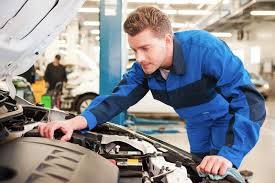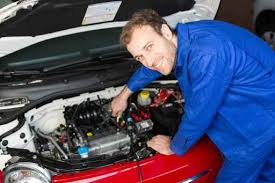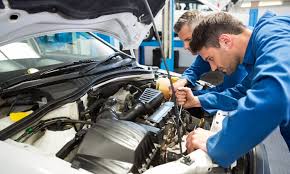What Makes an Auto Repair Expert?
We are frequently asked this question in the course of a crash investigation. The answer is not always simple and depends on a number of factors including, why the vehicle was being serviced, what specific work the vehicle was having done, and who was performing the work. In this article we discuss some of these questions as a starting point to assist in your investigation. As a general note, any repair or service station is responsible for the quality of the work they have performed. This includes the quality and completeness of workmanship as well as the selection of parts and components that are appropriate for the vehicle. In the course of completing their job, technicians and service stations are obligated to notify their customer of any unsafe conditions they notice. In certain situations, a maintenance or repair station may be responsible for inspecting components outside of the initial scope for which the vehicle was brought in.

Why was the Vehicle in for Service?
The reason a vehicle was brought in for service may affect the process by which a technician diagnoses and resolves an issue. Using the example of a flat tire, the standard of care for repairing the problem depends on the cause of the flat. If the tire was punctured, it may be sufficient to remove the puncture and plug the hole; however, if the flat was caused by a pothole, the technician would be expected to check the wheel and suspension for further damage.

Who Performed the Work?
As mentioned earlier, the shop performing any work is responsible for the quality of the work they have performed and to notify their customer of any unsafe conditions they notice. There are some types of facilities however, that may have greater or lesser responsibilities for noticing issues based on the specific services they provide. For example, car dealerships are responsible for checking each vehicle that comes in for service for any applicable recalls and service bulletins. This service would not necessarily be expected by a non-dealership. On the opposite side of the spectrum are shops specializing in aesthetics, such as interiors, audio/visual, or window tinting; these shops would be less expected to notice or recognize potential mechanical issues with a vehicle.

What Specific Work was Performed?
This is an important question because some service/maintenance operations are confined to a particular area of the vehicle. For instance, a technician repairing a broken window switch would be unlikely to notice signs of advanced rust or decay on the underside of the vehicle. Alternately, a worker providing an oil change would be likely to see signs of advanced rust even on the rear-underside of the vehicle, but may not notice smaller signs of failure on other components. On the extreme other side, are technicians performing inspections for state requirements or as part of a certified pre-owned program; these workers would be expected to notice and address significant issues throughout the vehicle.
How to Select a Repair Facility
1. Facility Type
When evaluating full-service auto repair shops, drivers have three basic choices:
- Dealerships – Dealer service departments are very familiar with common problems on the makes of cars they sell. Dealers also have factory-trained technicians, and are keenly aware of technical service bulletins or other special service advisories.
- Independents – Quality independent repair shops may be slightly less expensive than dealers, and tend to have higher overall customer satisfaction. In addition, customers at independent repair shop are more likely to deal directly with the owner or technician, making it easier to develop relationships with the people who service their cars.
- Specialists – Some independent repair shops specialize in certain vehicle makes or specific vehicle systems. By focusing on a limited part of the market, these shops can provide very efficient and effective service.
2. Appearance
A clean, well-organized repair facility reflects attention to detail and an effort to maintain a professional image.
3. Amenities
The facility should have a comfortable waiting area and clean restrooms. Many shops now have pick-up and drop-off service for the convenience of customers.
4. Technicians
The facility should employ qualified technicians who receive ongoing training in the latest technology. Certifications from the National Institute for Automotive Service Excellence (ASE) are often posted, and dealerships may display vehicle manufacturer service training credentials. Collision repair shops often have certificates from training offered by the Inter-Industry Conference on Auto Collision Repair (I-CAR).
5. Equipment
A good repair shop will have up-to-date service equipment and repair data. The amount of information necessary to repair modern cars can no longer be effectively contained in paper manuals. Quality shops today have Internet access to repair information or an on-site service information library of CD/DVD ROMs.